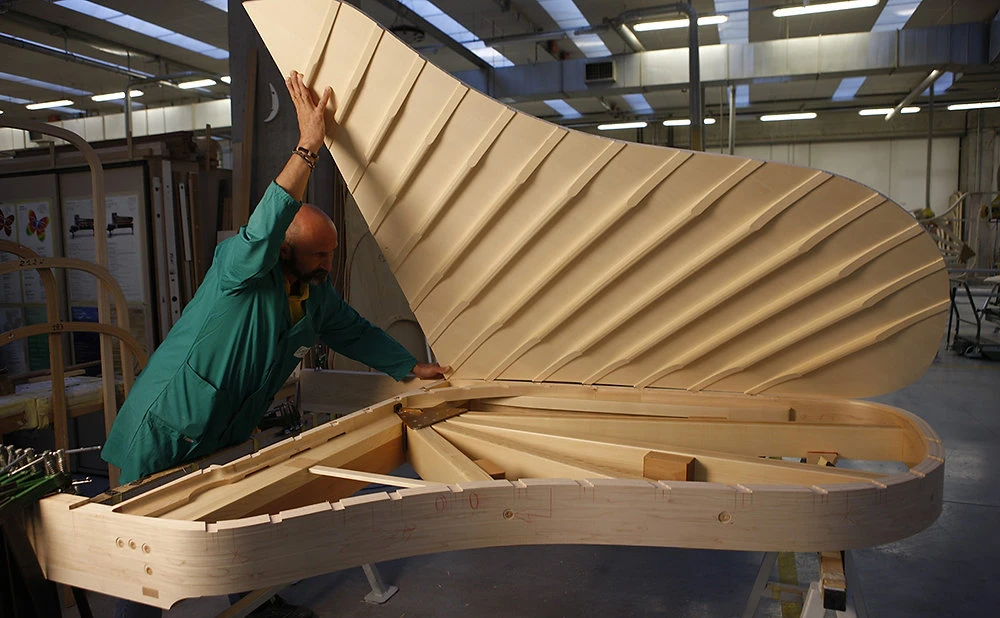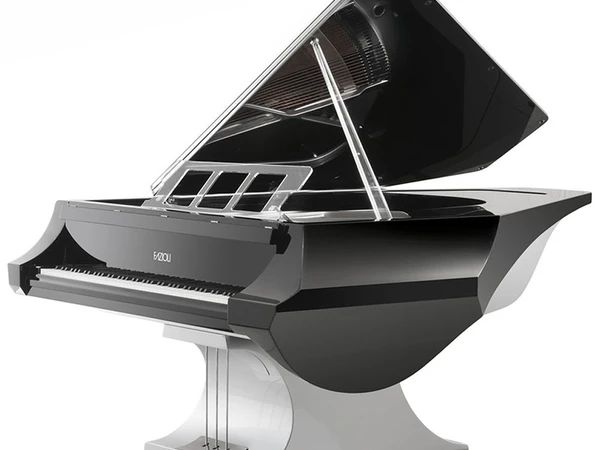
Being one of the newest players on the scene of piano manufacturing, and yet garnering so much respect, Fazioli is definitely showing their commitment in excellence and the passion they have to produce the best instrument possible. The painstaking process of building truly a special soundboard takes years to complete, and this particular attention to the process is the reason why the amount of instruments that leave their factory in Sacile is limited each year. Ensuring the highest quality of instruments - a piano made by and for pianists - is something that we shouldn’t take for granted, especially in this day and age when industrialization becomes so rampant, making things ‘easier’ to produce. As Fazioli says, “Each component needs a rest period essential to its settling, to absorb and redistribute the tensions accumulated during the manufacturing process. The resting time is patiently respected, without external intervention that can force the process. Slowness in Fazioli is a conscious choice, contrary to the logic of the industrial market, always oriented to uncompromising quality.”

The same goes to Estonia pianos, which hold the same view about the importance of the soundboard as the true heart of the instrument and vital in the creation of musical sound. Using only the finest spruce from the high altitudes of Italian or Swiss Alps that grow slowly, Estonia believes in having the soundboard made by high-quality wood with a high number of growth rings per inch and comes from the heartwood of clear grain. It is also important for the wood to acquire very minimal coloring over the years. Estonia believes wholeheartedly that the soundboard would be treated in the best way possible to create a sound that is as natural and as pure as possible, and that lies on the craftsmanship of their wonderful team that boasts decades of experience. And most importantly, Estonia believes in the best quality of their soundboards no matter what the size of your piano, from the smallest to the largest grand pianos.

The sound is alive - as beautiful as “Scandinavian landscapes, the untouched nature of Estonia, the history and tradition of Northern Europe…” And if you think that we’re joking, you better try out our Estonia pianos! Another one of a kind piano manufacturer, Estonia pianos are built for pianists. Dr. Indrek Laul, as the current head of Estonia pianos, is an Estonian pianist that earned his degree at The Juilliard School, with the utmost dedication and passion to grow the company to build the piano of the highest quality possible. (Read more here: http://www.estoniapiano.com/craftsmanship.html and why we think Estonia is such a hidden gem: Estonia: The Hidden Jewel of Pianos)
So why should we care about our soundboards, what wood the manufacturers are using, or how long does it take to produce a soundboard? Because it speaks volumes to the commitment that the manufacturers have to ensure the highest quality instruments. People say don’t judge a book by its cover. And to this we say, Yes! Just because we can’t always see the soundboard, doesn’t mean that it plays a minimal role in the character and quality of your instrument. Next time you’re looking into an instrument, ask about the soundboard! What is it made of, what’s the process of making them, is there any particular story to the makings of the soundboard? Where do they get their wood, how is it treated? How long do they let the wood rest before actually fitting it into the rim of the piano?
While there are of course other things to concern yourself about when you’re dealing with buying or picking an instrument, this is one of the most important aspects of your piano. The soundboard brings life, character, and so much warmth...if they’re built as meticulously as possible. Just like the human heart brings life to the body, the same goes with the piano. Experience the life of an instrument with us at The Grand Signature Piano! We couldn’t wait to share the story and their beauty with you!
The Grand Signature Piano
Plaza Indonesia, level 3
Jl. M.H. Thamrin no. 28-30
Phone +62-21-2992-4346
Whatsapp +62-813-8000-7225



